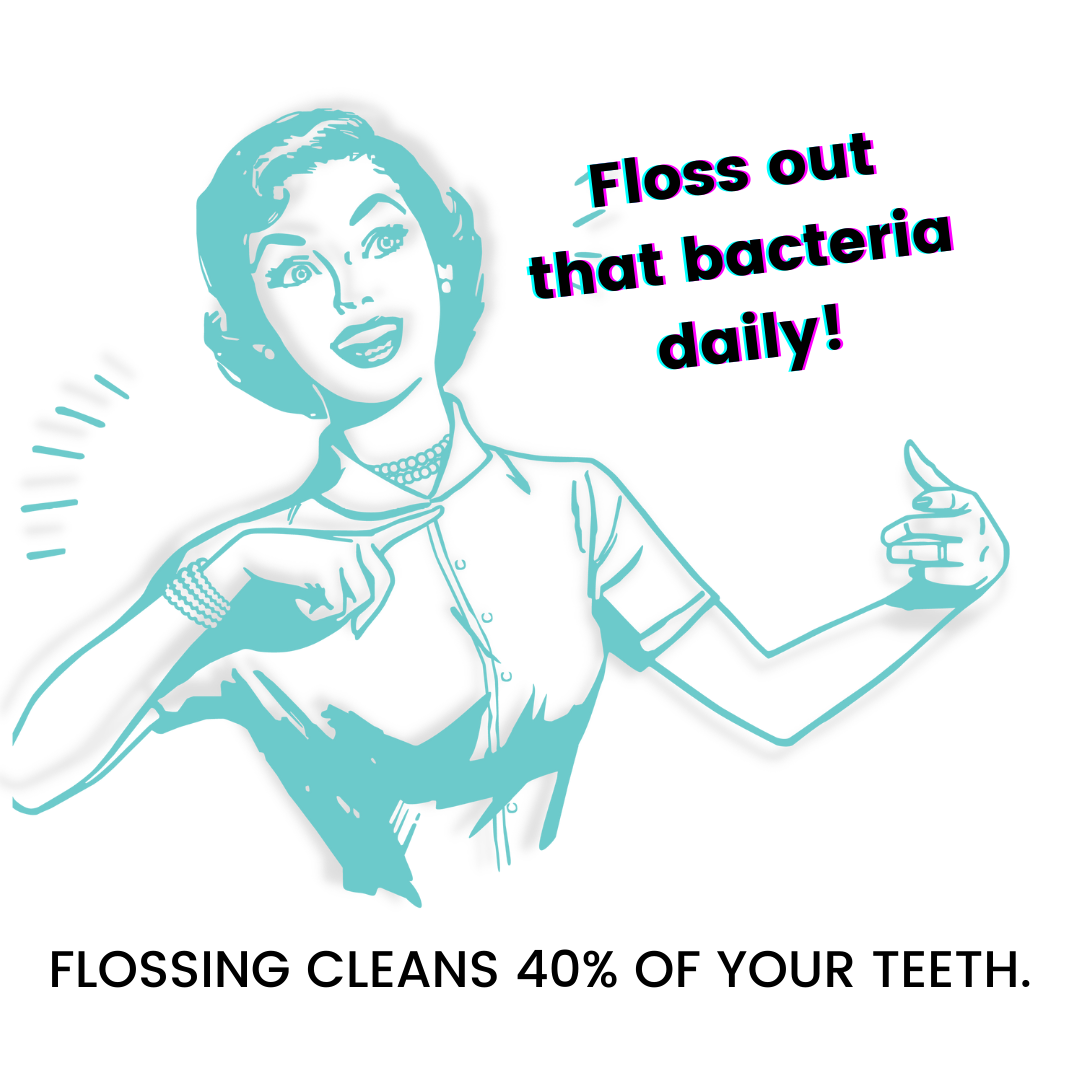September is almost finished! Which means fall is right around the corner. It’s National Gum Care Month, and it’s a great time to brush up on routines that can keep our mouths clean and healthy. A simple action, like brushing teeth, is very beneficial to our oral health and overall wellness. Skipping out on a good oral hygiene routine can cause a lot of problems down the line. Especially choosing not to go to the dentist for checkups. That always leaves us with unnoticed problems until it’s too late. Maintaining healthy teeth and gums is a lifelong commitment that everyone should be able to do. For us to take care of our mouths and gums, first, we must go over what could happen if we don’t have the proper oral care.
According to the National Institute of Health, our mouths can carry up to 700 strains of bacteria. So, what happens when bacteria are left to linger inside our mouths? Well, it happily feeds on the sugar from the food and drinks that we consume throughout the daily. Bacteria also likes to break down tooth enamel, which in turn, making the enamel weaker and leading to tooth decay. Tooth decay and cavities are some of the most common health problems, but this can also lead to gum disease as well.
Our gums are not supposed to bleed when we brush or floss our teeth. If that does happen, you may have gum disease. Gum disease is an inflammation of the gums that when left untreated can deteriorate the jawbone supporting our teeth. Gum disease starts because of the bacteria that form and stays on teeth. If the bacteria are not removed daily with brushing and flossing, the plaque builds up and the bacteria starts infecting the gums and teeth. Left untreated, teeth will eventually start to fall out or will require professional extraction. There are three stages of gum disease: gingivitis, periodontitis, and advanced periodontitis.
- Gingivitis: This is the earliest stage of gum disease. If plaque builds up at the gum line, it will cause inflammation and the gums can become swollen and red. If the plaque is not removed, it can irritate the gum tissue that is around our teeth, which causes gingivitis. At this early stage of gum disease, you might notice bleeding gums after brushing or while flossing. If caught early enough, this stage of gum disease can be cured with your dentist.
- Periodontitis: This is the second stage of gum disease. At this stage, the tissue and the bone that holds our teeth in place are damaged. When bacteria stay on teeth long enough, plaque builds up, which then turns into tartar, and tartar is a lot harder to clean off of our teeth. At this stage of gum disease, if it is not treated, periodontitis heavily recedes the gums and tooth loss is imminent.
- Advanced Periodontitis: This is the final and severest stage of gum disease. At this point, the tissue and the bone that hold our teeth in place are well deteriorated. The gum tissue has pulled away from teeth, which then creates pockets for even more bacteria to build up and cause further damage and infections. When this happens, it’s very easy for teeth to become dislodged and fall out.
Now, the best way to stop gum disease is to prevent it from starting. Brushing and flossing twice per day and using fluoride toothpaste are the best we can do at home to keep gum disease from developing. However, if symptoms of gum disease are already present, visiting a dentist or a periodontist, a dentist that specializes in gum disease, is the best option for getting back on a healthy track. When you come in for a gum disease appointment, the first step is a consultation exam to develop the best treatment option to fit your needs. This may include surgical and/or non-surgical methods.
- Nonsurgical treatments: Some nonsurgical treatments can help the early stages of gum disease. Deep cleaning, where scaling and root planning are used to remove plaque and tartar from below the gum line.
- Surgical treatments: Some of the surgical treatments that periodontists can perform to help with gum disease include bone grafting, flap surgery, and tissue regeneration.
So far, we’ve talked about oral care and what could happen if we don’t take the time to properly care of our teeth. We should know this as adults, but what about children? It’s important for children to know what they can do to take care of their teeth and gums. While conversations with your children and their health will vary by age, here are the basic examples of what to share and demonstrate with them at home:
- Brush their teeth twice a day
- Floss daily
- See the dentist regularly
- Eat healthy meals and limit sugary drinks and snacks

It has been said before that the mouth is the gateway to our overall health, so we should try to protect it as much as possible. Practicing good dental health doesn’t start at the dentist's office, it starts with us. Us taking care of our teeth at home is where the real magic happens. Maintaining a consistent oral hygiene routine is a lifelong commitment that we can all commit to. Happy national gum care month!